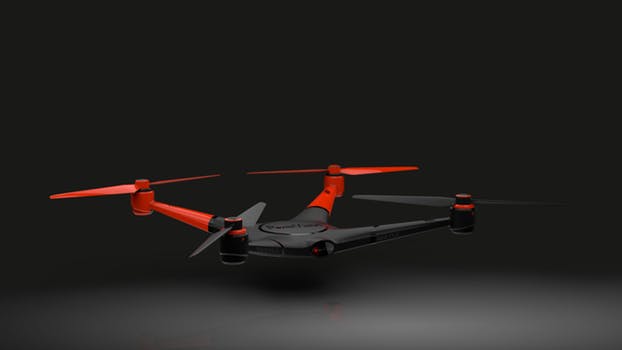TheDeveloperBlog.com
C-Sharp | Java | Python | Swift | GO | WPF | Ruby | Scala | F# | JavaScript | SQL | PHP | Angular | HTML
Computer Graphics Reflection
Computer Graphics Reflection with Computer Graphics Tutorial, Line Generation Algorithm, 2D Transformation, 3D Computer Graphics, Types of Curves, Surfaces, Computer Animation, Animation Techniques, Keyframing, Fractals etc.
Reflection:It is a transformation which produces a mirror image of an object. The mirror image can be either about x-axis or y-axis. The object is rotated by180°. Types of Reflection:
1. Reflection about x-axis: The object can be reflected about x-axis with the help of the following matrix 
In this transformation value of x will remain same whereas the value of y will become negative. Following figures shows the reflection of the object axis. The object will lie another side of the x-axis. 
2. Reflection about y-axis: The object can be reflected about y-axis with the help of following transformation matrix 
Here the values of x will be reversed, whereas the value of y will remain the same. The object will lie another side of the y-axis. The following figure shows the reflection about the y-axis 
3. Reflection about an axis perpendicular to xy plane and passing through origin: 

In this value of x and y both will be reversed. This is also called as half revolution about the origin. 4. Reflection about line y=x: The object may be reflected about line y = x with the help of following transformation matrix 

First of all, the object is rotated at 45°. The direction of rotation is clockwise. After it reflection is done concerning x-axis. The last step is the rotation of y=x back to its original position that is counterclockwise at 45°. Example: A triangle ABC is given. The coordinates of A, B, C are given as A (3 4) Find reflected position of triangle i.e., to the x-axis. Solution: 

The a point coordinates after reflection 
The b point coordinates after reflection 
The coordinate of point c after reflection 
a (3, 4) becomes a1 (3, -4) Program to perform Mirror Reflection about a line:
#include <iostream.h>
#include <conio.h>
#include <graphics.h>
#include <math.h>
#include <stdlib.h>
#define pi 3.14
class arc
{
float x[10],y[10],theta,ref[10][10],ang;
float p[10][10],p1[10][10],x1[10],y1[10],xm,ym;
int i,k,j,n;
public:
void get();
void cal ();
void map ();
void graph ();
void plot ();
void plot1();
};
void arc::get ()
{
cout<<"\n ENTER ANGLE OF LINE INCLINATION AND Y INTERCEPT";
cin>> ang >> b;
cout <<"\n ENTER NO OF VERTICES";
cin >> n;
cout <<"\n ENTER";
for (i=0; i<n; i++)
{
cout<<"\n x["<<i<<"] and y["<<i<<"]";
}
theta =(ang * pi)/ 180;
ref [0] [0] = cos (2 * theta);
ref [0] [1] = sin (2 * theta);
ref [0] [2] = -b *sin (2 * theta);
ref [1] [0] = sin (2 * theta);
ref [1] [1] = -cos (2 * theta);
ref [1] [2] = b * (cos (2 * theta)+1);
ref [2] [0]=0;
ref [2] [1]=0;
ref [2] [2] = 1;
}
void arc :: cal ()
{
for (i=0; i < n; i++)
{
p[0] [i] = x [i];
p [1] [i] = y [i];
p [2] [i] = 1;
}
for (i=0; i<3;i++)
{
for (j=0; j<n; j++)
{
p1 [i] [j]=0;
for (k=0;k<3; k++)
}
p1 [i] [j] + = ref [i] [k] * p [k] [j];
}
for (i=0; i<n; i++)
{
x1 [i]=p1[0] [i];
y1 [i] = p1 [1] [i];
}
}
void arc :: map ()
{
int gd = DETECT,gm;
initgraph (&gd, &gm, " ");
int errorcode = graphresult ();
/* an error occurred */
if (errorcode ! = grOK)
{
printf ("Graphics error: %s \n", grapherrormsg (errorcode));
printf ("Press any key to halt:");
getch ();
exit (1); /* terminate with an error code */
}
}
void arc :: graph ()
{
xm=getmaxx ()/2;
ym=getmaxy ()/2;
line (xm, 0, xmm 2*ym);
}
void arc :: plot 1 ()
{
for (i=0; i <n-1; i++)
{
circle (x1[i]+xm, (-y1[i]+ym), 2);
line (x1[i]+xm, (-y1[i]+ym), x1[i+1]+xm, (-y1[i+1]+ym));
}
line (x1[n-1)+xm, (-y1[n-1]+ym), x1[0]+xm, (-y1[0]+ym));
getch();
}
void arc :: plot ()
{
for (i=0; i <n-1; i++)
{
circle (x1[i]+xm, (-y1[i]+ym, 2);
line (x1[i]+xm, (-y1[i]+ym), x[i+1]+xm, (-y1[i+1]+ym));
}
line (x[n-1]+xm, (-y1[n-1]+ym), x[0]+xm, (-y[0]+ym));
getch();
}
void main ()
{
class arc a;
clrscr();
a.map();
a.graph();
a.get();
a.cal();
a.plot();
a.plot1();
getch();
}
Output: 
Next TopicShearing
|
Related Links:
- Computer Network | Transport Layer Protocols
- Computer Network | Application Layer
- Computer Graphics Cathode Ray Tube | CRT
- Computer Graphics Direct View Storage Tubes
- Computer Graphics Flat Panel Display
- Computer Graphics | Input Devices
- Computer Graphics Scan Conversion Definition
- Computer Graphics | Trackball
- Computer Graphics | Light Pen
- Computer Graphics | Image Scanner
- Computer Graphics | Output Devices
- Computer Graphics | Plotters
- Computer Graphics Scan Converting a Point
- Computer Graphics Scan Converting a Straight Line
- Computer Graphics DDA Algorithm
- Computer Graphics Bresenham's Line Algorithm
- Computer Graphics Defining a Circle
- Computer Graphics Boundary Fill Algorithm
- Computer Graphics Flood Fill Algorithm
- Computer Graphics Scan Line Polygon Fill Algorithm
- Computer Graphics | Line Clipping
- Computer Graphics Introduction of Transformation
- Computer Graphics Translation
- Computer Graphics Scaling
- Computer Graphics Rotation
- Computer Graphics Reflection
- Computer Graphics Shearing
- Computer Graphics Homogeneous Coordinates
- Computer Graphics Composite Transformation
- Computer Graphics Window
- Computer Graphics Window to Viewport Co-ordinate Transformation
- Computer Graphics Zooming
- Computer Graphics Panning
- Computer Network | Error Correction
- Computer Network | Error Detection
- Computer Architecture VS Computer Organization
- Computer Instructions | Computer Organization and Architecture Tutorial
- Computer Registers
- Computer Network Routing | Types of Routing
- Computer Network | Digital Signature
- PGP - Pretty Good Privacy
- Computer Graphics Programs
- Computer Graphics | Clipping
- Computer Network Tutorial
- Computer Graphics Tutorial
- Computer Graphics | Text Clipping
- Computer Graphics | Polygon
- Computer Graphics Pointing and Positioning Techniques
- Computer Graphics Elastic or Rubber Band Techniques
- Computer Graphics Color CRT Monitors
- Computer Graphics | Point Clipping
- Computer Graphics Dragging
- Computer Graphics 3D Shearing
- Computer Graphics Introduction of Shading
- Computer Network | TCP/IP model
- Computer Graphics Constant Intensity Shading
- Computer Graphics Gouraud shading
- Computer Graphics Phong Shading
- Computer Graphics Animation
- Computer Graphics Hidden Surface Removal
- Computer Graphics Back Face Removal Algorithm
- Computer Graphics Application Areas of Animation
- Computer Graphics Animation Functions
- Computer Graphics 3D Graphics
- Computer Graphics 3D Transformations
- Computer Graphics 3D Scaling
- Computer Graphics 3D Rotation
- Computer Graphics 3D Rotation about Arbitrary Axis
- Computer Graphics 3D Inverse Transformations
- Computer Graphics 3D Reflection
- Computer Organization and Architecture Tutorial | COA Tutorial
- Computer Graphics Bresenham's Circle Algorithm
- Computer Graphics Midpoint Circle Algorithm
- Computer Graphics Painter's Algorithm
- Computer Graphics Scan Line Algorithm
- Computer Graphics Area Subdivision Algorithm
- Computer Graphics 3D Modelling System
- Computer Graphics Projection
- Computer Graphics Perspective Projection
- Computer Graphics Parallel Projection
- Computer Network Digital Transmission
- Top 50 Computer Graphics Interview Questions (2021)
- Computer Graphics Midpoint Ellipse Algorithm
- HTTP - HyperText Transfer Protocol
- Computer Graphics Z-Buffer Algorithm
- Computer Graphics Display Processor
- Computer Network | Routing Algorithm
- Learn Computer Fundamentals Tutorial
- Computer Graphics Scan converting a Ellipse
- Computer Graphics Polynomial Method
- Computer Graphics Trignometric Method
- Computer Network Introduction
- Computer Network Components
- Computer Network Topologies
- Computer Network | Transmission Modes
- Computer Network Models
- Computer Network | Switching Techniques
- Computer Network | Switching Modes
- Computer Network | Client and Server Model
- DNS - Domain Name System
- FTP - File Transfer Protocol
- Telnet - Terminal Network
- Computer Network Features
- Computer Network Architecture
- Computer Network | Switching
- Computer Network Security
- Computer Network Privacy
- Computer Network | Transport Layer

